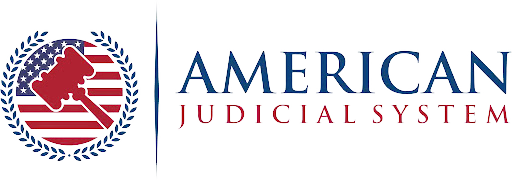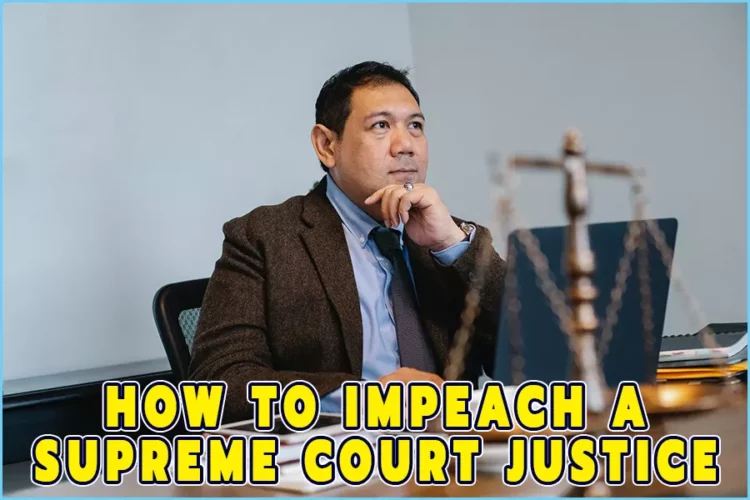The government works under the separation of powers and checks and balances. To ensure that the Judiciary remains independent, the Supreme Court judges have tenured positions.
The Executive and the legislature need to hold the Judiciary accountable for their actions. Here is where checks and balances come in.
The Constitution provides the necessary procedure for ousting a sitting Supreme Court justice.
Congress is the only constitutionally mandated body to carry out impeachment hearings. The trials happen in the Upper House of Congress.
How To Impeach A Supreme Court Justice
Congress is the only body that can oust a Supreme Court judge. The Constitution mandates the House of Representatives to carry out impeachment. Any impeachment trial for any public servant has to occur in the Senate.
Here is a detailed procedure on how Congress carries out impeachment:
1. Investigation
Before the impeachment trials, Congress must investigate the Supreme Court judge. A special congressional committee does the investigation. The Committee constitutes members of the House of Representatives.
In most cases, the Judicial Committee of the House does the impeachment investigations.
The Committee gathers the facts of the case. They establish probable cause for impeachment.
2. Voting in the Lower House
Once the Judicial Committee conducts the investigation, they present the Articles of Impeachment.
The Article of Impeachment is a detailed document containing the charges. These charges get used as the basis for removing the Supreme Court Judge.
The Committee brings the Articles before the House of Representatives. The House votes on whether or not to impeach the Supreme Court Justice.
If there is a simple resolution, the Supreme Court Justice gets impeached. A simple or common resolution requires a 50% + one-vote majority.
If the Articles fail to get a simple majority, the process ends at this stage. The Supreme Court Justice can resume office.
3. Senate Trials
The Senate trials are the last stage for impeachment. The House of Representatives must have passed a simple resolution to get to the senate trials.
The resolution supports the Articles of Impeachment put forth by the Judicial Committee of the Lower House.
The Chief Justice presides over the trial. They do so in their capacity as the head of the Judiciary.
The Supreme Court justice gets put on trial. He answers the charges. The Senate then votes to oust or keep the Justice in office.
The Supreme Court Justice can only leave office if the Senate passes a special resolution. It requires a 67% majority vote to put the person on trial.
If the Senate fails to meet the 67% majority, the Supreme Court Justice remains in office.
Checks And Balances In The Judiciary
For democratic countries, Checks and Balances are one of the most important doctrines. Constitutions protect the concepts all over the world.
What are Checks and Balances? They are constitutional regulations that ensure branches of government hold each other accountable for their actions.
The Judiciary, Executive, and Legislature all regulate each other without interference at a functional level.
Checks and Balances protect public and federal offices from abuse of power and misconduct. There are various ways the Constitution promotes accountability in government.
The Judiciary can reject all unconstitutional executive orders. Likewise, the Judiciary can reject any unconstitutional bill. Judicial positions are tenured. The only way to remove a sitting justice is through impeachment.
The Executive appoints the Chief Justice, the head of the Judiciary. The president gives nominations for the Chief Justice and Supreme Court Justices.
The nominees must undergo vetting in the Senate. The nominees get vetted by Senate to establish whether they are fit for the roles.
The Justices enjoy Tenure of Office. Their positions do not have fixed terms. It means that the same judges can serve across different political regimes.
The Doctrine Of Separation Of Powers And The Supreme Court
Separation of Powers is equally as important as Checks and Balances. It is the main aspect of democracy. The Constitution protects the doctrine in several articles.
What is Separation of Powers? It is a concept that ensures that the branches of government do not influence each other’s functions. It allows the branches to operate freely without undue influence.
It is important to ensure that the branches operate independently. Political influence erodes the government’s effectiveness and impartiality.
The Constitution protects the functions of the Judiciary. No other arm shall interpret the Constitution apart from the Judiciary.
The Supreme court is the highest legal authority in the land. No arm shall overturn Supreme court decisions.
The Supreme Court is the only court that can hear election petition cases.
Because the positions in the Supreme Court are tenured, they can work free from undue influence.
The Federal Court And State Courts
The United States has a hierarchy in the legal system. The courts operate under the Federal Court System. There are three main levels of the system. They are:
- District Courts
- Circuit Courts
- The Supreme Court
Each state has its State Court System. These courts differ widely and operate within a state’s jurisdiction. The courts mainly hear criminal cases.
Federal courts also have limitations on the type of cases they can hear. Federal statutes bind these courts.
What if the jurisdictions of the federal and state courts overlap? The plaintiff’s prerogative is to choose between the state or federal court.
Federal Courts have diverse jurisdiction. A plaintiff may choose to bring legal action to a defendant in a different state. The defendant may be outside the state’s court jurisdiction.
The defendant’s state might not be willing to deport them, but federal courts can hear the case. What if it is a criminal case? The federal courts do not have the authority to hear such cases.
There are two extenuating circumstances where federal courts might hear criminal cases:
- The state courts forward a criminal case to the federal courts.
- The federal government refers criminal cases to the federal court.
The federal court and state court systems allow for two trials in some cases. You can get convicted in a federal court if you get an innocent verdict in your state court.
The Supreme Court
It is the highest court in the land. The court has the final verdict on all cases dealing with federal law.
The Chief Justice is the head of the Supreme Court. They are also the head of the Judicial branch of government.
The Supreme court is also an appellate court. The Supreme court can hear cases from Circuit Courts. Note that the court reserves the right to turn away appeals. If it is the case, the previous verdict remains.
The court has eight supreme court justice. All members of the court are presidential appointees. They have to undergo senate vetting. Just like the Chief Justice, Supreme Court justices have tenured offices.
There are specific cases that only the Supreme Court presides over. An example is a presidential election dispute. The court also determines whether legislations are constitutional.
Circuit Courts
These are the Federal Courts of Appeals. They are the second-highest courts in the United States. If a defendant gets a guilty verdict, they have a right to appeal. The circuit court listens to such cases.
There are currently 12 federal courts in the United States. These courts serve a block of states.
A court has jurisdiction over several states.
The judges who head these courts are presidential appointees. Once the president has given the nomination, the Senate confirms them. They enjoy tenure of office. The only way to remove the judges is through impeachment in Congress.
Some appellate cases don’t lie within a Circuit Courts’ jurisdiction.
These cases include court-martial appeals. The Court of Appeal for the Armed Forces hears such cases.
District Courts
They are the base-level federal courts in the United States. In the country, every state has a federal court.
They hold federal trials at the district levels.
These courts have District Judges. Just like Supreme Court Justices, their positions are tenured. You can, therefore, not remove the judges except through impeachment in Congress.
The courts appoint magistrate judges. Magistrate judges do not enjoy tenure in office. They have a fixed term and get replaced when the term ends. The judges appoint the magistrate through a simple majority vote.
District courts can hear cases where the accuser and defendant stay in different states. They have jurisdiction beyond the state boundaries.
Some cases, such as bankruptcy claims, cannot be heard at the state level. The District Courts hear the cases.
Conclusion
The principle of separation of powers and checks and balances checks the government. The Supreme Court judges have tenured posts to guarantee the independence of the Judiciary.
The Executive and legislative branches must hold the Judiciary responsible for its conduct. Here is when checks and balances come into play. The steps for removing a sitting Supreme Court justice are in the Constitution.
The only body authorized by the Constitution to hold impeachment proceedings in Congress. The trials take place in the House of Representatives’ Upper Chamber.










